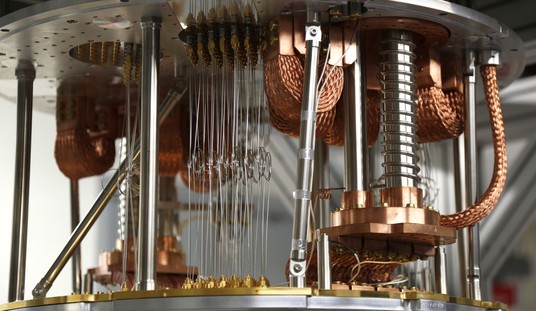Before we get to the big-but-not-so-big-as-you-might-think news about the recent de-extinction of dire wolves, I must confess how much I've wanted one. I learned about Canis dirus the same way so many other people did, watching the first season of "Game of Thrones." Giant, friendly dogs that will rip the throats out of my enemies? Gimme!
In real life, of course, a dire wolf would indeed be large (if not giant) but not at all friendly. The throat-ripping is all too real, though. Dire wolves, which went extinct around 10,000 years ago, are believed to have diverged from other wolves millions of years ago. They're heavier, stockier, and with broader jaws meant for crushing the bones of larger prey, like mammoths. So they weren't a direct ancestor of today's domesticated dogs or gray wolves. Dire wolves were their own, bone-crushing species.
And they're back… sort of.
This week's Time magazine has a living, breathing dire wolf-ish on the cover, underneath the word "Extinct" that's been crossed out with a red marker.
TIME's new cover: The dire wolf is back after over 10,000 years. Here's what that means for other extinct species https://t.co/LQtosdfiEf pic.twitter.com/bv8EbeefuW
— TIME (@TIME) April 7, 2025
Gorgeous, isn't it? But what about my long-hoped-for dire pup?
"Relying on deft genetic engineering and ancient, preserved DNA," a team at Colossal Biosciences "deciphered the dire wolf genome, rewrote the genetic code of the common gray wolf to match it, and, using domestic dogs as surrogate mothers, brought Romulus, Remus, and their sister, 2-month-old Khaleesi, into the world."
“We are an evolutionary force at this point,” Beth Shapiro, Colossal’s chief science officer, told Time — and she was, as the magazine put it, speaking for all of humanity. “We are deciding what the future of these species will be.”
Time credits Colossal's work with "effectively for the first time de-extincting a line of beasts whose live gene pool long ago vanished."
I'm not trying to be pedantic but Colossal hasn't de-extincted the dire wolf. What they've done is to de-extinct dire wolf attributes into modern wolves — and that's precisely why I'm so excited about what they've done.
My 19-year-old son has said for years that when he gets his own place, he wants either a German Shepherd or a bear for a pet, but what if Colossal could split the difference when they splice the DNA?
If you're an investor, imagine the commercial potential of DNA-splicing those same extinct characteristics into a large, fully domesticated dog breed. If you're a dog lover who appreciates wolves [raises hand proudly], imagine the pet-owning potential.
It may well turn out that those otherwise desirable dire wolf attributes have the wild built in, and that grafting those genes into domesticated DNA will result in un-domesticated puppies. Colossal will want to breed and raise a few generations of dire dogs before going to market. Call me old-fashioned, but if my puppy is going to grow up to have a dire wolf's broad, bone-crunching jaws, that dog needs to be fully domesticated.
Regardless of how it all pans out — whether Colossal can keep going and bring back wooly mammoths and the dodo bird, among other plans — I'll always be grateful for that gorgeous wolf on the cover of Time, even if it isn't quite dire.
Recommended: They Cleared HOW MANY Fake Voters Off the Rolls?
P.S. Thanks so much for reading. If you'd like to join some of the smartest voices on the internet in our Virtually Troll-Free™ comments section — plus get access to exclusive essays, podcasts, and video live chats with your favorite writers — consider becoming a VIP member with this 60% off promotion offer. Providing alternative conservative news and commentary ain't free (but right now, it IS cheap).










Join the conversation as a VIP Member